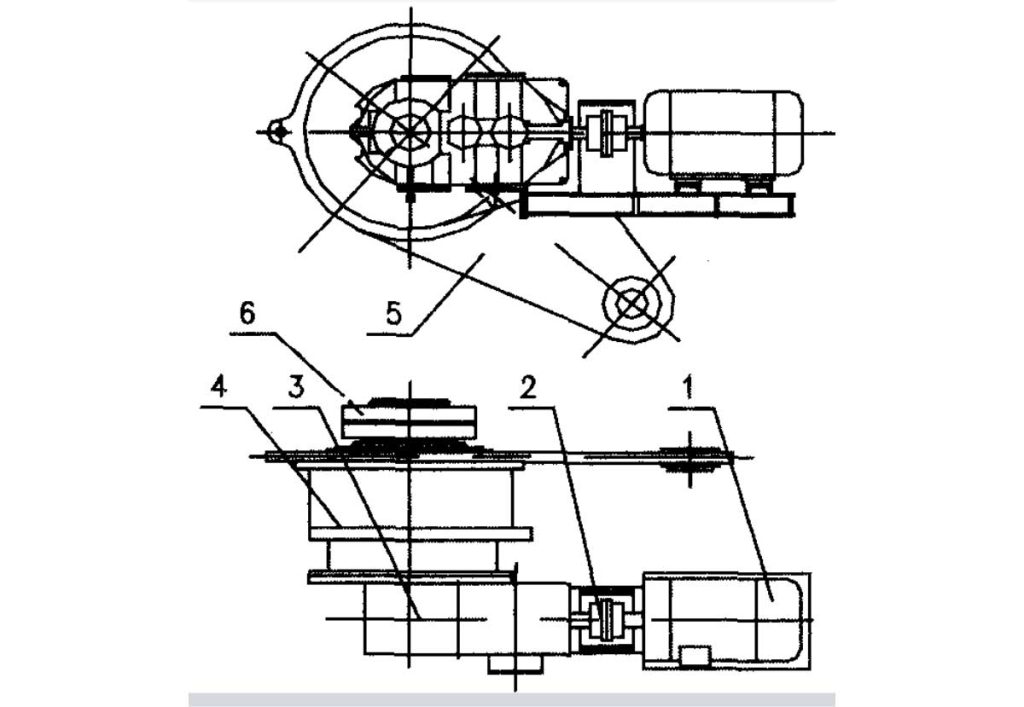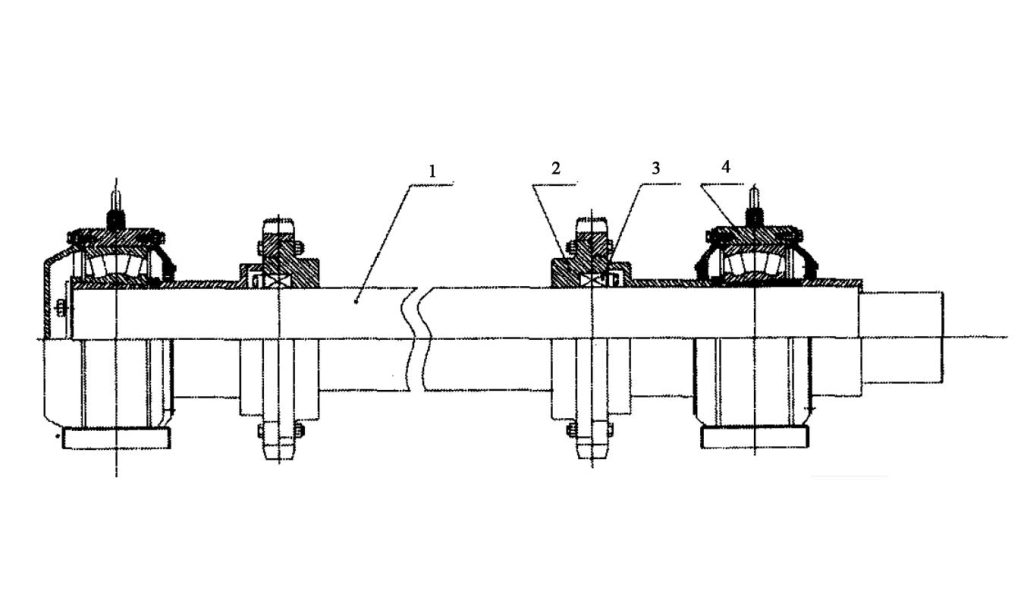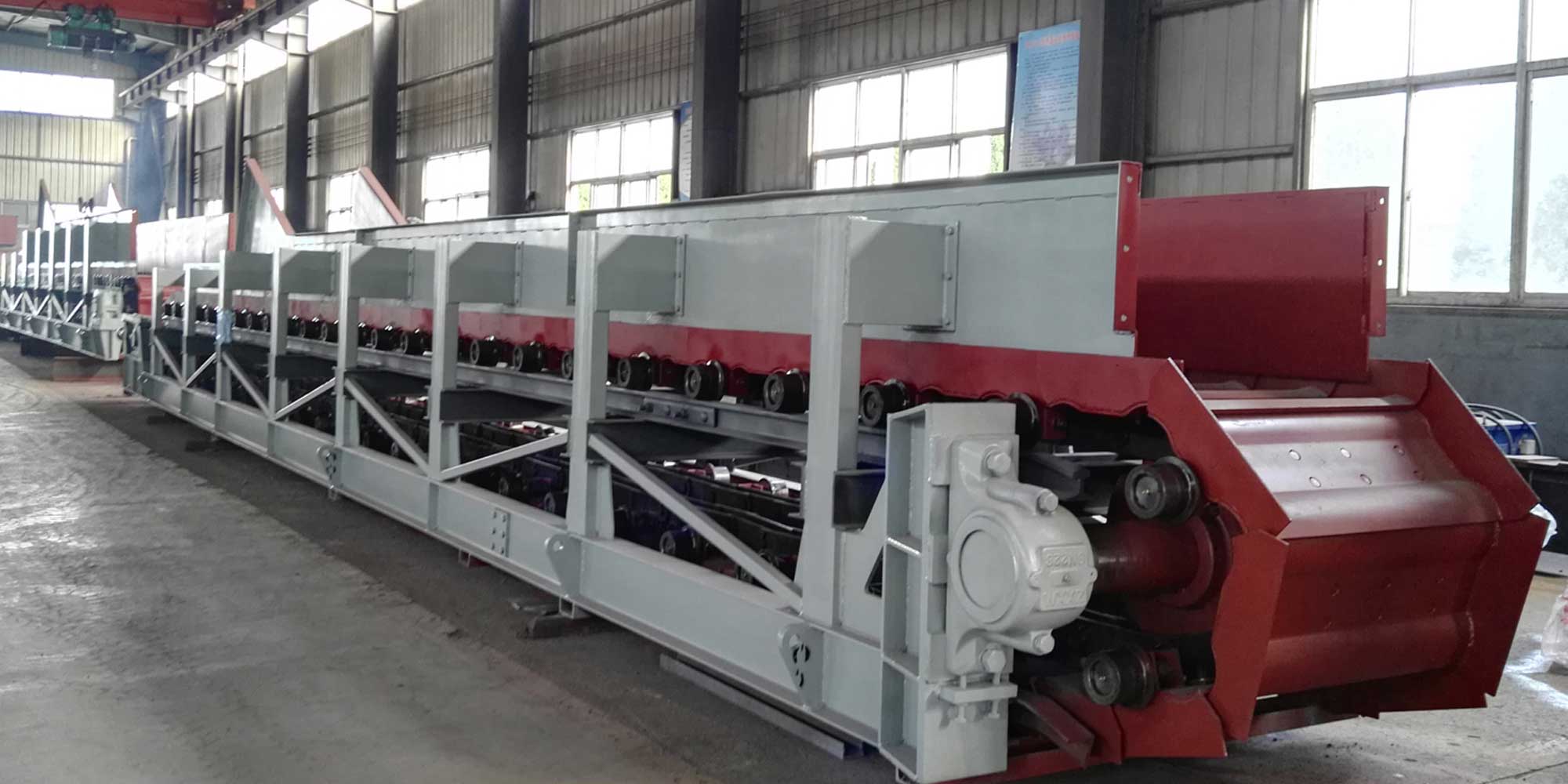Apron feeders are divided into three series: heavy apron feeders, medium apron feeders, and light apron feeders according to the size or delivery volume of the conveyed materials. According to the material strength, production capacity, silo pressure, and material bulk density, different series of apron feeders are selected.
Heavy-Duty Apron Feeder
Heavy-duty apron feeders are widely used in mining, metallurgy, building materials, and coal industries. This machine is mainly used under the silo and hopper with a certain silo pressure, to convey materials with different particle sizes and different bulk densities evenly and continuously in a short distance to various crushing, screening, and transportation equipment or receiving devices. It is not only suitable for processing Coarse-grained materials are also suitable for fine-grained materials.
Install
In terms of installation form, the machine is divided into two types: horizontal installation and inclined installation, and the maximum upward inclination can reach 25°. It can complete heavy work in harsh environments and has greater adaptability to material particle size, composition changes, temperature, viscosity, frost, rain, snow, or frozen materials.
Two-speed regulation forms
The feeding speed can be adjusted. Two forms are often used, frequency conversion speed regulation and hydraulic motor speed regulation, and can be controlled and interlocked with the receiving device. The control mode is divided into machine-side control and remote control, both of which can ensure the maximum efficiency of the receiving device.
Working Principle of Heavy-Duty Apron Feeder
A heavy-duty apron feeder is a conveying equipment that is driven by a chain. The chain is equipped with a material receiving chute, and the drive shaft is equipped with a sprocket. When working, the power of the motor is connected to the drive shaft, and the hollow shaft of the drive device reducer through the locking disc to drive the sprocket shaft to rotate. Through the meshing of the sprocket teeth and the chain pin shaft, the chain plate is dragged for a continuous linear motion to complete the purpose of conveying materials. The chain plate is supported by the supporting rollers and supporting sprockets installed on the frame, and the chain is properly meshed by adjusting the tensioning device.
Top 6 features of heavy-duty apron feeder structural
- Simple structure: The heavy-duty apron feeder is composed of a driving device, a transmission shaft device, a tension shaft device, a chain plate device, various supporting wheels, a frame, and other components.
- Easy to use: The heavy-duty apron feeder can be installed and used in various places (open air or underground), and it is also suitable for frost and frozen materials. It can transport raw ore, and bulk materials with particle size ≥1500mm, and it is also suitable for powder materials.
- Easy maintenance: The heavy-duty apron feeder does not need frequent maintenance, just pay attention to check whether the bolts of the chain apron device are loose during use.
- Adjustable transport volume: The operating speed of the heavy-duty apron feeder can be adjusted through frequency conversion devices or hydraulic motors to achieve the purpose of adjusting production capacity.
- Manpower saving: Since the heavy-duty apron feeder is easy to operate, easy to maintain, and requires fewer management personnel, under normal circumstances, there is no need for management personnel next to the heavy-duty apron feeder, and it only needs to be operated through the PLC monitoring room.
- Durable: Heavy-duty apron feeder belongs to low-speed high-torque transmission. Due to the low speed of the output shaft, generally around 1.5~5r/min, the wear on the machine parts is slow, which prolongs the replacement time of parts and the overhaul period.
Performance advantages of floating drives for heavy-duty apron feeders

4-planetary reducer; 5-torque rod; 6-shrink disc
The driving device of the heavy-duty apron feeder is a fulcrum floating type, which is composed of a motor, a coupling, a right-angle reducer, a planetary reducer, a torque rod, a locking disc, and other components. Inside the output shaft of the planetary reducer. The two are connected by a locking disc, which is characterized by no foundation for suspension, and a lightweight and large speed ratio. Due to the floating fulcrum type, the installation error and the additional bending moment caused by the support are reduced, and the service life of the transmission shaft is improved. The meshing between the head sprocket and the chain link is improved, the contact stress is reduced, and the service life of the gear and the chain link is improved. The driving device is shown in Figure 1.
Structural optimization of head sprocket of heavy apron feeder

The main shaft device is composed of the drive shaft, drive sprocket, expansion sleeve, bearing seat, bearing seat, and other components (as shown in Figure 2). The chain plate is driven by two sprockets installed on the shaft for continuous movement to achieve transportation. The purpose of feeding. The feature of this device is that the sprocket is connected by an expansion sleeve, and the main shaft is set in the output shaft of the reducer, which is easy to disassemble and maintain. The drive sprocket is composed of a hub and gear teeth. The gear teeth are in half structure and connected with the hub by bolts. During use, it is usually just the gear teeth that wear badly and need to be replaced. When this split structure is adopted, when the gear teeth are worn out, only the gear teeth are replaced, and there is no need to re-customize the driving sprocket. Compared with the previous integral sprocket structure, the replacement is simple and the maintenance cost for users is reduced.
Final words
The transmission device and the main shaft device are the core components of the heavy-duty apron feeder. The optimization and improvement of the transmission device and the drive sprocket play a decisive role in the operation of the heavy-duty apron feeder. A new type of heavy-duty apron feeder is adopted, the failure rate is significantly reduced, the operation rate is greatly improved, and the service life of the equipment is generally extended.
The application of the floating transmission device with its original suspension technology has successfully solved the driving problem of the apron feeder and similar equipment, further improved and improved the equipment level of the apron feeder, and enhanced the competitiveness of the product. The unique split structure of the driving sprocket improves the structural performance of the equipment and is easy to replace and maintain. It has won unanimous praise from the majority of users and better reflects the company’s service tenet of targeting users. With further innovation and optimization of technology, it will be more widely used in cement, mining, and other industries.
